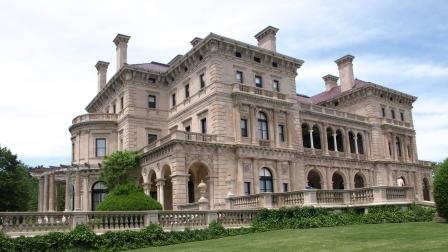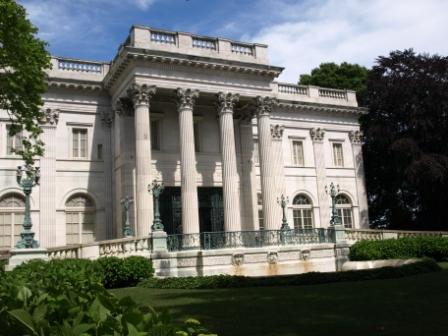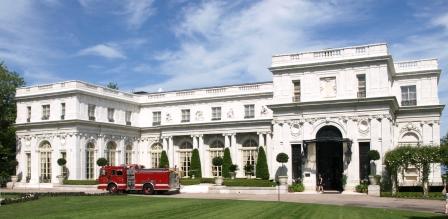The American Dream

VulcanSpirit
Richard & Alison Brunstrom
Sun 19 Jun 2011 23:25
|
Newport is famous for the grand mansions built by
the super-rich of New York during the so-called Gilded Age (a term of derision
invented by Mark Twain). These vast houses, known as cottages, were built
for use mainly during a two month summer season beginning in the 1880s and
ending in the early years of the twentieth century. The society scene was killed
financially by the introduction of personal income tax in 1913, and by the 1940s
the houses were regarded as white elephants. Some were destroyed for
redevelopment but many have been saved by the Preservation Society
of Newport (akin to the UK National Trust on a small scale) and are now a
significant and successful visitor attraction.
We went to look at a few today. Firstly 'The
Breakers' built by the railroad tycoon Cornelius Vanderbilt. Amazingly,
construction of this 70 room house took only two years and the house opened in
1895. Vanderbilt's grandfather started with a rowing boat ferry in New York and
ended up on his death in 1877 with $100m - equivalent in today's money to
the sort of fortune the Bill Gates has amassed. Alison can just be seen propping
up the balustrade. No photography is allowed inside so I can't show you the
hideously ornate fixtures and fittings (including four taps at each bath and
basin - hot and cold running fresh or salt water!) but I suppose they reflect
the taste of the era. The house was effectively abandoned by the family in the
late 1930s.
 Next up is the 'Marble House' built a few years
earlier by Alva, the wife of Cornelius Vanderbilt's younger brother. This really
is marble, inside and out - 500 000 cu ft of it, mostly imported from
Europe.This was the grandest house in North America when it opened despite
having only a mere 50 rooms. The front doors are fabulously intricate wrought
iron and weigh ten tons each. Alva caused outrage by divorcing her husband,
unheard of at the time, and became a mainstay of the women's suffrage movement
in the USA which led to the 19th Amendment in 1919 and votes for women the
following year. Her daughter was forced into an arranged marriage with a British
Duke and went to live at Blenheim.
 The third house is Rosecliff, built by another
wealthy heiress particularly for the Newport party season. Her father, a
penniless Irish immigrant, struck lucky with a silver lode in Nevada and amassed
$40m; he gave his daughter a $1m cheque as a wedding present . The house
looks superficially as if it were made of marble but is actually glazed
terracotta, invented in Chicago as a means of fireproof cladding for iron framed
skyscrapers. The party season here cost about $700k -$1m for two month
stretch. The house is more or less built round the ballroom whose row of four
large windows are visible behind the fire truck (it turned up to a lady who had
fallen over; fire and rescue services are routinely combined in the US, a style
which we could usefully emulate). The house cost about $11m to build (at 1900
prices; hugely more at today's), but it sold fo justr $21 000 in 1941 its entire
purpose having totally disappeared in less than thirty years.
 |